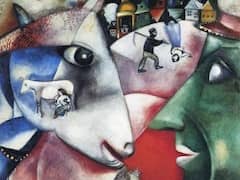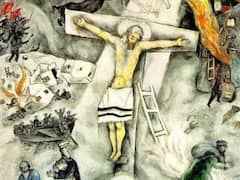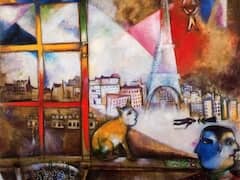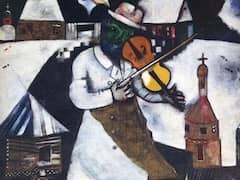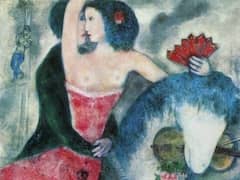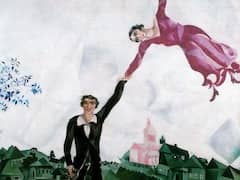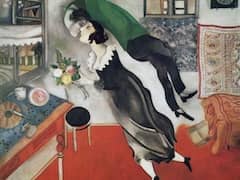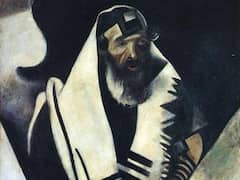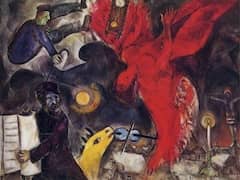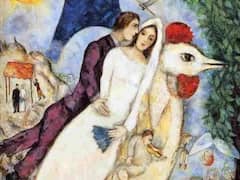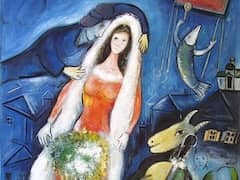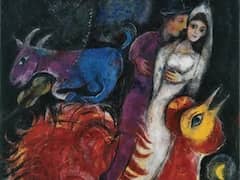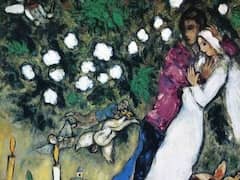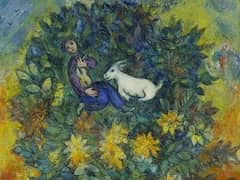The Juggler, 1943 - by Marc Chagall
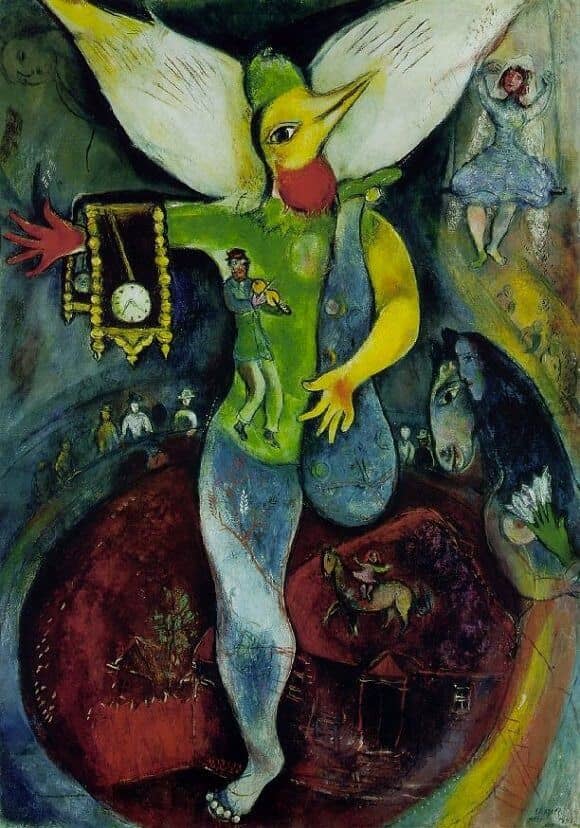
The Juggler is a major picture of the American war years. A very serious and mystical painting in the full sense of the word, it is filled with a personal mythology which avoids any literary symbolism. The signs are esoteric and ambiguous; they seem to suggest something real and then shift to the unreal, yet they are readable as an allegory of a personal confession.
The central figure dominating the picture is a circus ballerina with a leg flung up in the kind of acrobatic posture which first appeared in a picture of 1913 (now missing) by Chagall, showing three acrobats; the pose survived in his iconography as a hieroglyph for the circus theme. This representational figure has a cocklike bird's head which is masculine in features and expression; two blossom-white, angelic wings transport this strange hermaphrodite-demon into another world. Thus the figure is woman, man, animal, demon, and angel all at the same time, comprising all manifestations of humanity.
Having become aware of this, one quickly discovers significant references suggested by color. The dark cobalt blue of the dancer's tights, garnished here and there with signs of the moon, identifies the lower part of the figure as belonging to the female, or lunar, zone. Above the light green of the upper garment rises the gold of the cock's head and of the arm which clasps the upflung leg, suggesting without any symbolism but by the resonance of the color alone the masculine, or the solar, element which the cock frequently represents in Chagallian iconography. Above all this are spread the creature's white wings, which lift it toward the heavenly region. Thus the strange figure also incorporates the lunar, the solar, and the numinous - the three zones which enclose the manifestations of humanity mentioned earlier.
Over the outstretched right arm, like a limp rag, hangs an old-fashioned wall clock, Chagall's token for the passage of time. Thus the angel-demon stands for the timeless, the constant, and the eternal in humanity, which is within the reach of the artist above all other persons - though not of the artist as an individual, but of the id of the artist, which is clown, artist, man, woman, demon, and angel all together and belongs simultaneously to the lunar, solar, and numinous spheres. That this is not meant to be the ego of the artist is indicated by the fiddler, Chagall's representative figure for artistic man, who is small and subordinate here and produces his little tune, so to speak, in the bosom of the "super-id."

